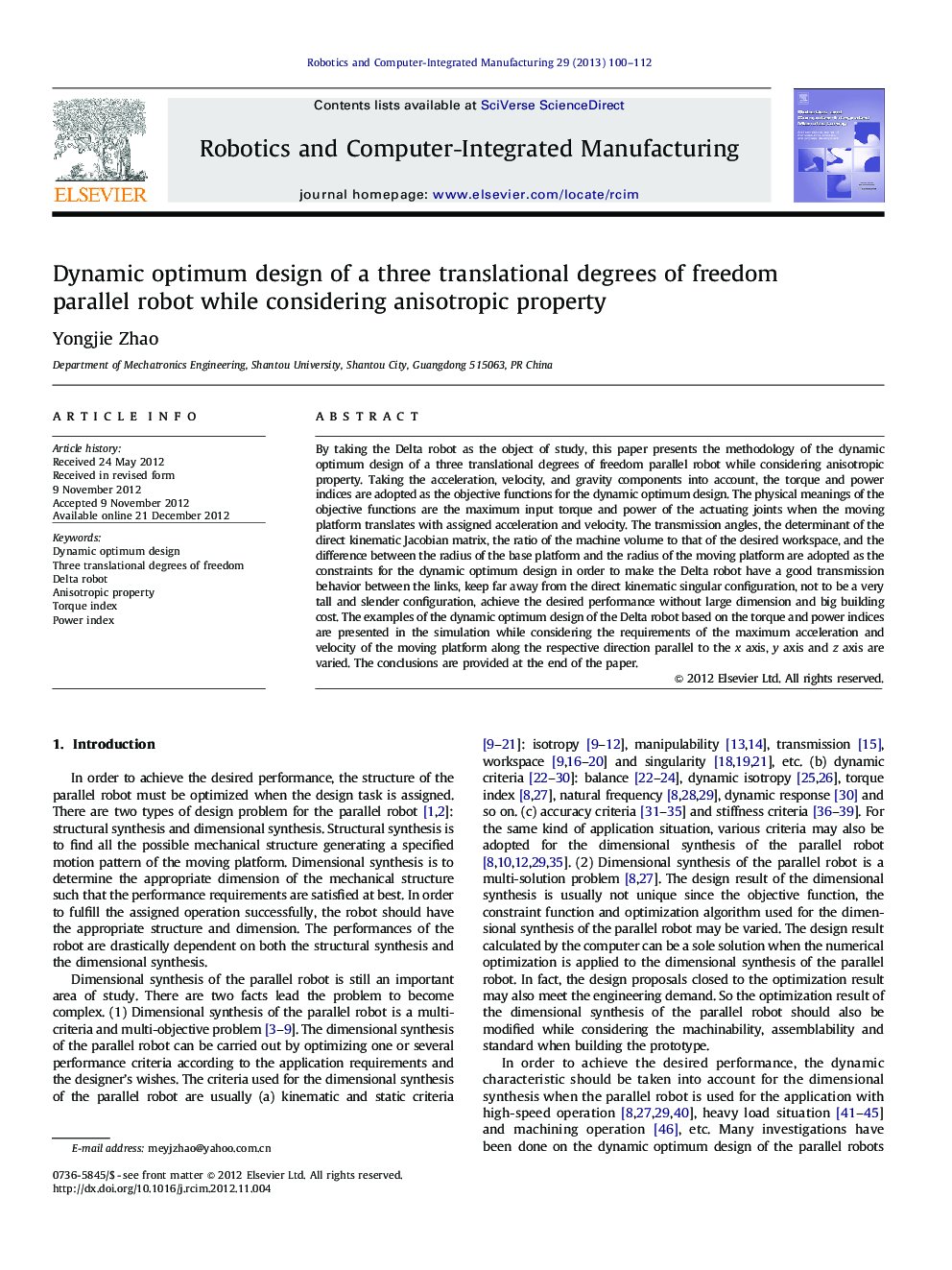| کد مقاله | کد نشریه | سال انتشار | مقاله انگلیسی | نسخه تمام متن |
|---|---|---|---|---|
| 413995 | 680778 | 2013 | 13 صفحه PDF | دانلود رایگان |

By taking the Delta robot as the object of study, this paper presents the methodology of the dynamic optimum design of a three translational degrees of freedom parallel robot while considering anisotropic property. Taking the acceleration, velocity, and gravity components into account, the torque and power indices are adopted as the objective functions for the dynamic optimum design. The physical meanings of the objective functions are the maximum input torque and power of the actuating joints when the moving platform translates with assigned acceleration and velocity. The transmission angles, the determinant of the direct kinematic Jacobian matrix, the ratio of the machine volume to that of the desired workspace, and the difference between the radius of the base platform and the radius of the moving platform are adopted as the constraints for the dynamic optimum design in order to make the Delta robot have a good transmission behavior between the links, keep far away from the direct kinematic singular configuration, not to be a very tall and slender configuration, achieve the desired performance without large dimension and big building cost. The examples of the dynamic optimum design of the Delta robot based on the torque and power indices are presented in the simulation while considering the requirements of the maximum acceleration and velocity of the moving platform along the respective direction parallel to the x axis, y axis and z axis are varied. The conclusions are provided at the end of the paper.
► Dynamic optimum design of the Delta robot while considering anisotropic property.
► The torque and power indices are adopted as the objective functions.
► The adopted torque and power indices include the acceleration, velocity and gravity components.
► The effects of the constraints on the dynamic optimum design are investigated.
► The methodology is useful for the dynamic optimum design of other parallel robots.
Journal: Robotics and Computer-Integrated Manufacturing - Volume 29, Issue 4, August 2013, Pages 100–112